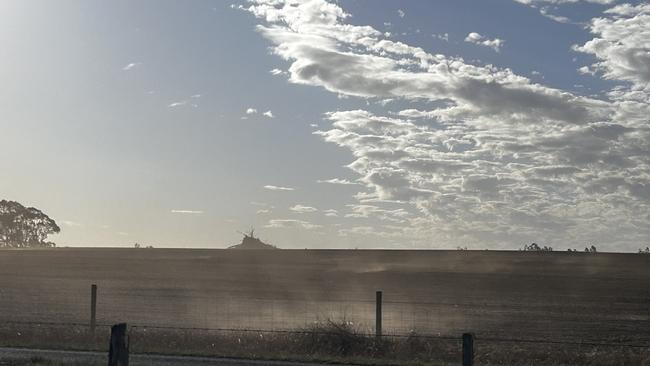Pasture damage is adding huge costs to farm bottomlines
Pasture experts say the window to grow feed before spring is fast closing, with warm windy weather blasting southern states.

Pasture experts say southern Australian drought regions are rapidly running out of time to grow any feed to carry over into winter.
It comes as high winds and warm temperatures hit the south west of Victoria and South Australia on Monday.
At Bordertown it was 26C and windy, and down at Macarthur, 25C with gusts up to 66km/hour.
With the autumn break evading vast agricultural regions, compounding two years of the lowest ever rainfall recorded in parts along the south west coast and in South Australia, vital seedbank that allows permanent pastures to regrow are being depleted as small showers cause false breaks. Seeds germinate, just to die when follow ups don’t come.
This added more cost over time for farm businesses to recover - to nurse pasture, resow and then allow to establish - and up to three seasons of lower productivity.
Meridian pasture and livestock consultant and Casterton farmer Andrew Speirs said there was “significant deaths” of ryegrass pastures occurring across in western Victoria, an huge portion of high rainfall country from “south of Cavendish to the coast” and from “Tyrendarra to Camperdown and beyond”.
“It is as tough as I have ever seen it,” he said.
“We have some existing pastures that have 70 per cent (of new plants alive), but quite a few not at all.”
Some farmers were resorting to using water shuttles to irrigate shot pastures to attempt to keep them alive as the drought continued.
“Some paddocks have reasonable plant numbers and we won’t have to resow, but in some cases there is very little (seed or plants) left,” he said.
“Grazing management also plays a part, but the sheep and cattle have to go somewhere so it is really important we don’t beat ourselves up, there are people now fragile enough out there about what they should have or could have done.”
Mr Speirs said many dairy farmers had resown and “some of the lighter country is hanging on, but I am not so confident about heavy country”, adding in sheep and beef areas many dry sown pastures “a reasonable percentage look like they will die”.
“All our pasture probes, there is no moisture, at all, to a metre,” he said.
He encouraged farmers to talk to banks about extending working capital to maintain production if appropriate.
Geelong-based consultant Cam Nicolson, Nicon Rural Services, said perennial plants were under stress, with ryegrass and cocksfoot most prone to damage.
He said some pasture re-sowing would be needed but if conditions improved some people may be able to nurse them through to reset in springtime.
The vast majority of farmers had stock in containment or sacrifice paddocks, which was “hugely costly”.
Water was the most pressing issue, he said. “Water in small dams is all gone,” he said.
“There are the financial implications but also the emotional aspect of it - do we have the energy to continue doing this (feeding) into a second year.
“The emotional toll won’t be fixed with money.”
Mr Nicolson said the south west was “rapidly running out of time” to grow feed before winter. “We won’t be able to catch up, we’re looking at another very challenging time ahead, it is bloody stressful.”
While farmers had sold down surplus stock the “much tougher decisions” on selling of core breeders were now taking place.





